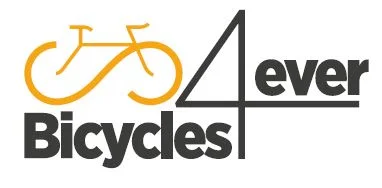How To Set Your Bike Saddle Height Quickly with GCN
Source: GCN Youtube Channel: How To Set Your Bike Saddle Height Quickly
Video How To Set Your Bike Saddle Height Quickly with Global Cycling Network
Video How To Set Your Bike Saddle Height Quickly with Global Cycling Network YouTube Channel.
How To Set Your Bike Saddle Height Quickly
The Importance of Saddle Height
Establishing the correct saddle height is crucial when setting up your bike. It is essential for ensuring a comfortable, pain-free, and efficient ride. There are various methods for determining your saddle height, whether through a professional bike fitting or by DIY methods at home. Finding the right saddle height is key to optimizing your cycling experience.
Setting Up Your Bike
Prior to adjusting your saddle height, it is recommended to place your bike on an indoor trainer if available. This will allow you to easily make adjustments and test ride your bike in a static position. Ensure that your bike is level to accurately gauge the saddle height. If an indoor trainer is not accessible, find a quiet area where you can lean your bike against and go for a brief ride to assess the comfort level.
The Heel Method
One of the quickest ways to determine your saddle height is through the “heel method.” This method is simple and requires minimal equipment, such as an Allen key for adjustments. To start, put on your cycling shoes and sit on your bike with one pedal positioned at the 6 o’clock position. Place your heel on the pedal, ensuring your leg is slightly extended but not overreaching. Adjust the saddle height if necessary until your heel can just touch the pedal. Clip in your feet and test pedal, ensuring a comfortable position. While this method provides a rough estimate, further adjustments may be needed based on flexibility and comfort.
Measuring Your Inseam
Another method for determining saddle height involves measuring your inseam. This can be done independently or with the assistance of a measuring partner. Stand against a flat wall with a book placed between your legs touching the wall. Keep the book steady as you move away from the wall and mark the height with a pencil. Measure the distance from the floor to the mark and calculate 88.3% of the inseam length to determine the initial saddle height. Adjust the saddle position accordingly and test ride to assess comfort and alignment.
Visual Cues for Saddle Height
When riding, pay attention to visual cues and sensations that may indicate an incorrect saddle height. Ensure your pelvis remains stable on the bike without excessive hip rotation. Maintain a neutral foot position without pointing toes or heels downward. Focus on achieving an efficient pedal stroke without any dead points, indicating proper alignment and saddle height adjustment.
Fine-Tuning Your Saddle Position
After setting the initial saddle height, consider additional adjustments to the saddle position, both fore and aft, and the saddle angle. Begin with a neutral saddle position on the rails and make minor adjustments based on comfort and alignment. Experiment with forward or backward movements to find the optimal position that best supports your riding style and preferences.
Conclusion
Finding the optimal saddle height is a fundamental aspect of bike setup that can significantly impact your cycling performance and comfort. Whether utilizing the heel method, measuring your inseam, or considering visual cues while riding, the goal is to achieve a position that enhances efficiency and minimizes discomfort. Remember that saddle height adjustments may require fine-tuning over time as you become accustomed to the changes. By prioritizing proper saddle height, you can enhance your cycling experience and enjoy a pain-free ride.
The opinions expressed in this space are the sole responsibility of the YouTube Channel Global Cycling Network and do not necessarily represent the views of Bicycles4ever Cycling Culture.

